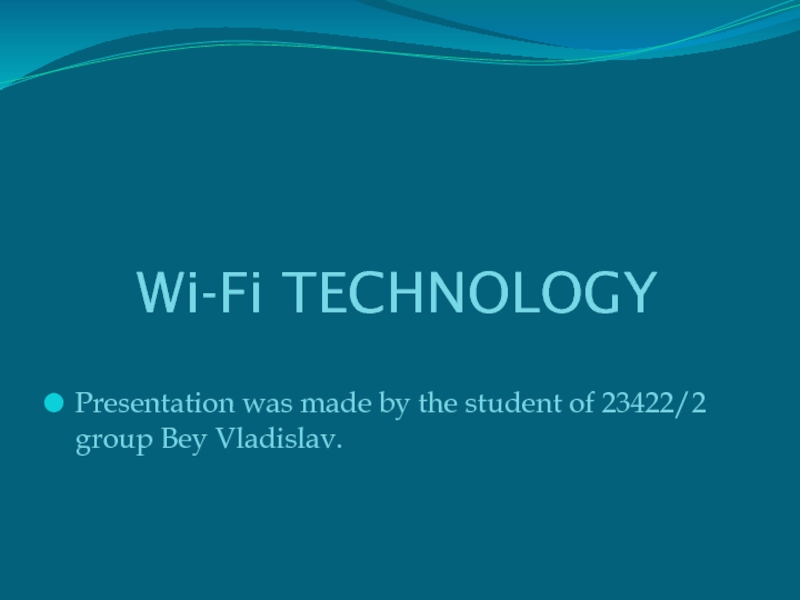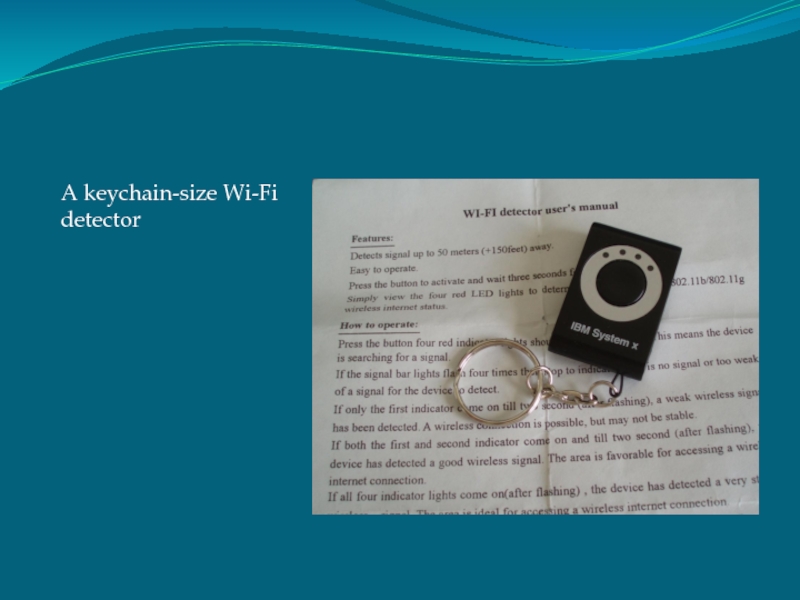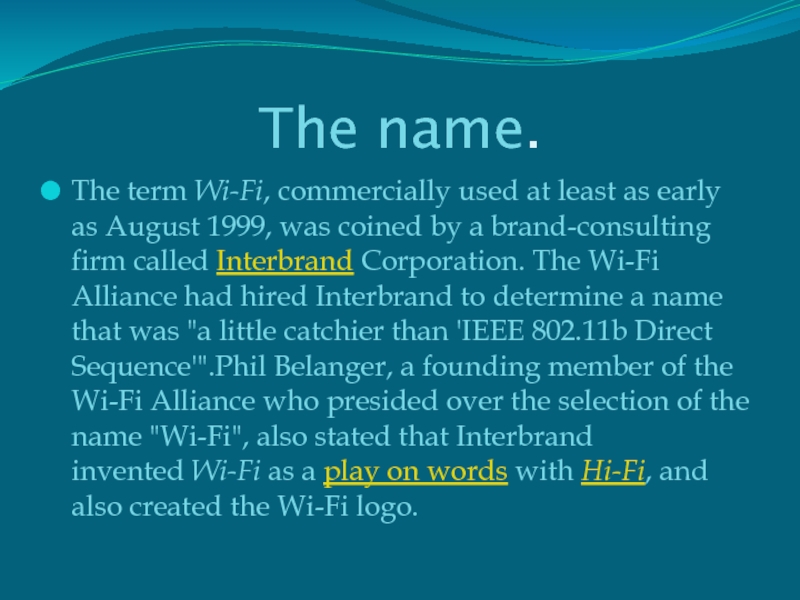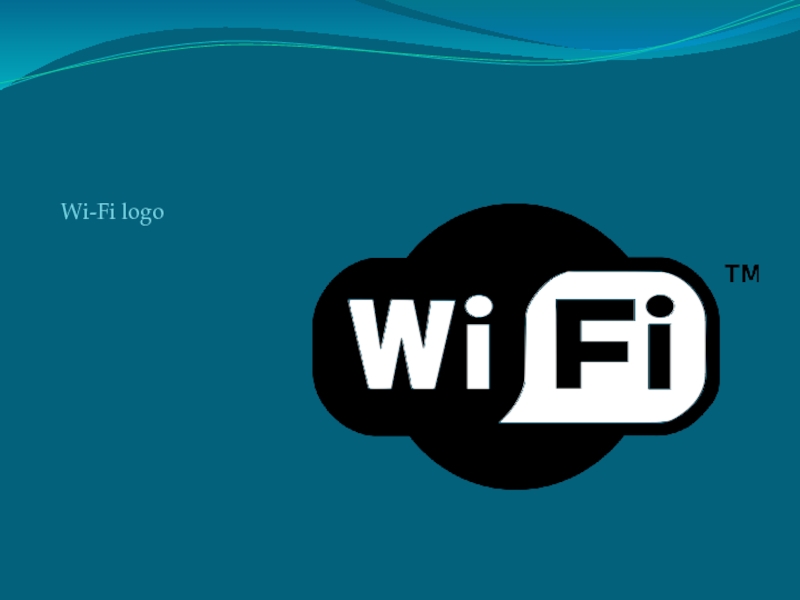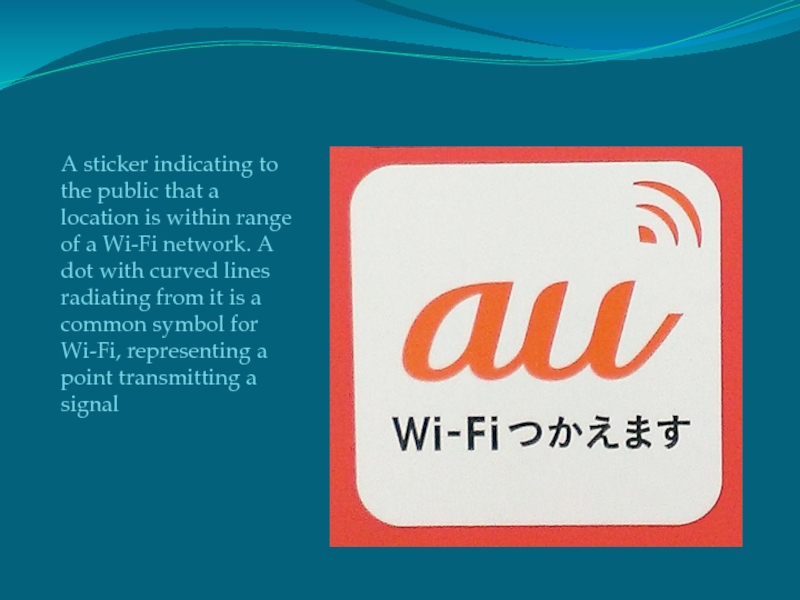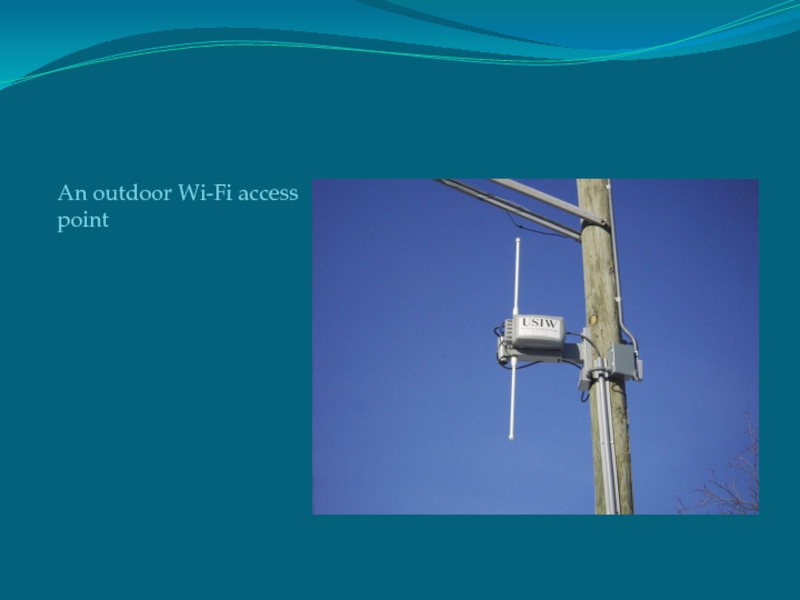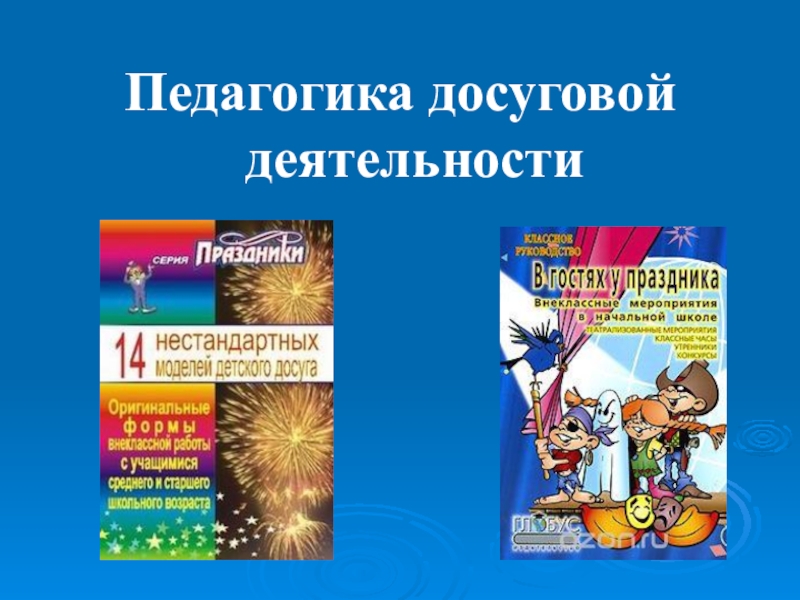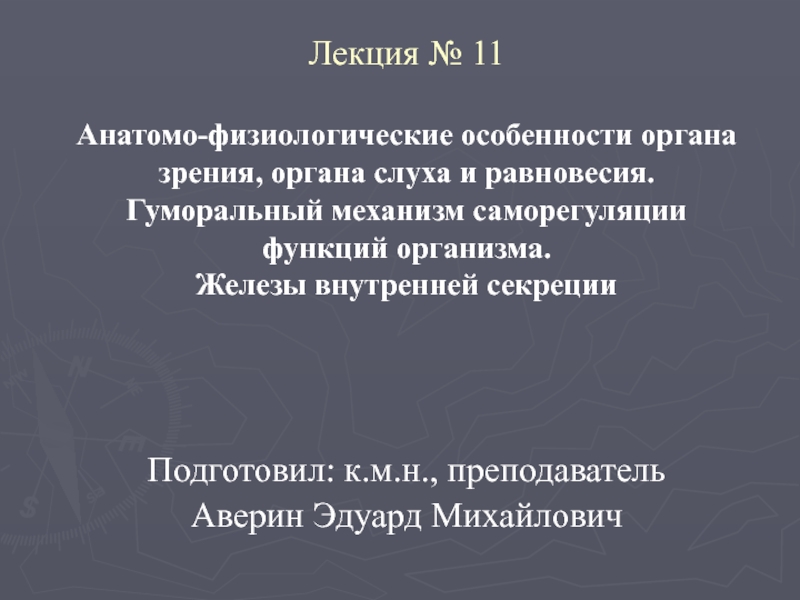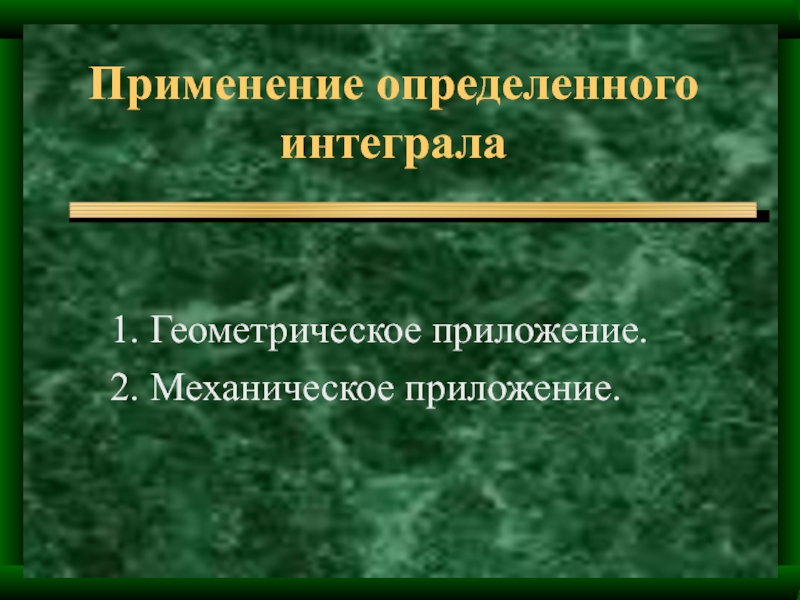Разделы презентаций
- Разное
- Английский язык
- Астрономия
- Алгебра
- Биология
- География
- Геометрия
- Детские презентации
- Информатика
- История
- Литература
- Математика
- Медицина
- Менеджмент
- Музыка
- МХК
- Немецкий язык
- ОБЖ
- Обществознание
- Окружающий мир
- Педагогика
- Русский язык
- Технология
- Физика
- Философия
- Химия
- Шаблоны, картинки для презентаций
- Экология
- Экономика
- Юриспруденция
Wi-Fi TECHNOLOGY
Содержание
- 1. Wi-Fi TECHNOLOGY
- 2. WI-FI.Wi-Fi, also spelled Wifi or WiFi, is a local area wireless
- 3. A keychain-size Wi-Fi detector
- 4. The name.The term Wi-Fi, commercially used at least
- 5. Wi-Fi logo
- 6. Background The Australian radio-astronomer John O'Sullivan developed a key
- 7. A sticker indicating to the public
- 8. Advantages Wi-Fi allows cheaper deployment of local area
- 9. Data security risks The most common wireless encryption-standard, Wired
- 10. An outdoor Wi-Fi access point
- 11. Скачать презентанцию
WI-FI.Wi-Fi, also spelled Wifi or WiFi, is a local area wireless technology that allows an electronic device to exchange data or connect to the internet using 2.4 GHz UHF and 5 GHz SHF radio waves. The name is a trademark name, and is a
Слайды и текст этой презентации
Слайд 2WI-FI.
Wi-Fi, also spelled Wifi or WiFi, is a local area wireless technology that allows an
electronic device to exchange data or connect to the internet
using 2.4 GHz UHF and 5 GHz SHF radio waves. The name is a trademark name, and is a play on the audiophile term Hi-Fi. TheWi-Fi Alliance defines Wi-Fi as any "wireless local area network (WLAN) products that are based on the Institute of Electrical and Electronics Engineers' (IEEE) 802.11 standards". However, since most modern WLANs are based on these standards, the term "Wi-Fi" is used in general English as a synonym for "WLAN". Only Wi-Fi products that complete Wi-Fi Alliance interoperability certification testing successfully may use the "Wi-Fi CERTIFIED" trademarkMany devices can use Wi-Fi, e.g., personal computers, video-game consoles, smartphones, digital cameras, tablet computers and digital audio players. These can connect to a network resource such as the Internet via a wireless network access point. Such an access point (or hotspot) has a range of about 20 meters (66 feet) indoors and a greater range outdoors.
Слайд 4The name.
The term Wi-Fi, commercially used at least as early as
August 1999, was coined by a brand-consulting firm called Interbrand Corporation. The
Wi-Fi Alliance had hired Interbrand to determine a name that was "a little catchier than 'IEEE 802.11b Direct Sequence'".Phil Belanger, a founding member of the Wi-Fi Alliance who presided over the selection of the name "Wi-Fi", also stated that Interbrand invented Wi-Fi as a play on words with Hi-Fi, and also created the Wi-Fi logo.Слайд 6Background
The Australian radio-astronomer John O'Sullivan developed a key patent used in Wi-Fi
as a by-product in a CSIRO research project, "a failed experiment to
detect exploding mini black holes the size of an atomic particle". In 1992 and 1996, Australian organization CSIRO (the Australian Commonwealth Scientific and Industrial Research Organization) obtained patents for a method later used in Wi-Fi to "unsmear" the signal.The first version of the 802.11 protocol was released in 1997, and provided up to 2Mbit/s link speeds. This was updated in 1999 with 802.11b to permit 11Mbit/s link speeds, and this proved to be popular.
In 1999, the Wi-Fi Alliance formed as a trade association to hold the Wi-Fi trademark under which most products are sold.
WiFI uses a large number of patents held by many different organizations. In April 2009, 14 technology companies agreed to pay CSIRO $250 million for infringements on CSIRO patents.This led to Australians labelling Wi-Fi as an Australian invention, though this has been the subject of some controversy. CSIRO won a further $220 million settlement for Wi-Fi patent-infringements in 2012 with global firms in the United States required to pay the CSIRO licensing rights estimated to be worth an additional $1 billion in royalties.
Слайд 7
A sticker indicating to the public that a location
is within range of a Wi-Fi network. A dot with
curved lines radiating from it is a common symbol for Wi-Fi, representing a point transmitting a signalСлайд 8Advantages
Wi-Fi allows cheaper deployment of local area networks (LANs). Also spaces where
cables cannot be run, such as outdoor areas and historical
buildings, can host wireless LANs.Manufacturers are building wireless network adapters into most laptops. The price of chipsets for Wi-Fi continues to drop, making it an economical networking option included in even more devices.[citation needed]
Different competitive brands of access points and client network-interfaces can inter-operate at a basic level of service. Products designated as "Wi-Fi Certified" by the Wi-Fi Alliance are backwards compatible. Unlike mobile phones, any standard Wi-Fi device will work anywhere in the world.
Wi-Fi Protected Access encryption (WPA2) is considered secure, provided a strong passphrase is used. New protocols for quality-of-service (WMM) make Wi-Fi more suitable for latency-sensitive applications (such as voice and video). Power saving mechanisms (WMM Power Save) extend battery life.
